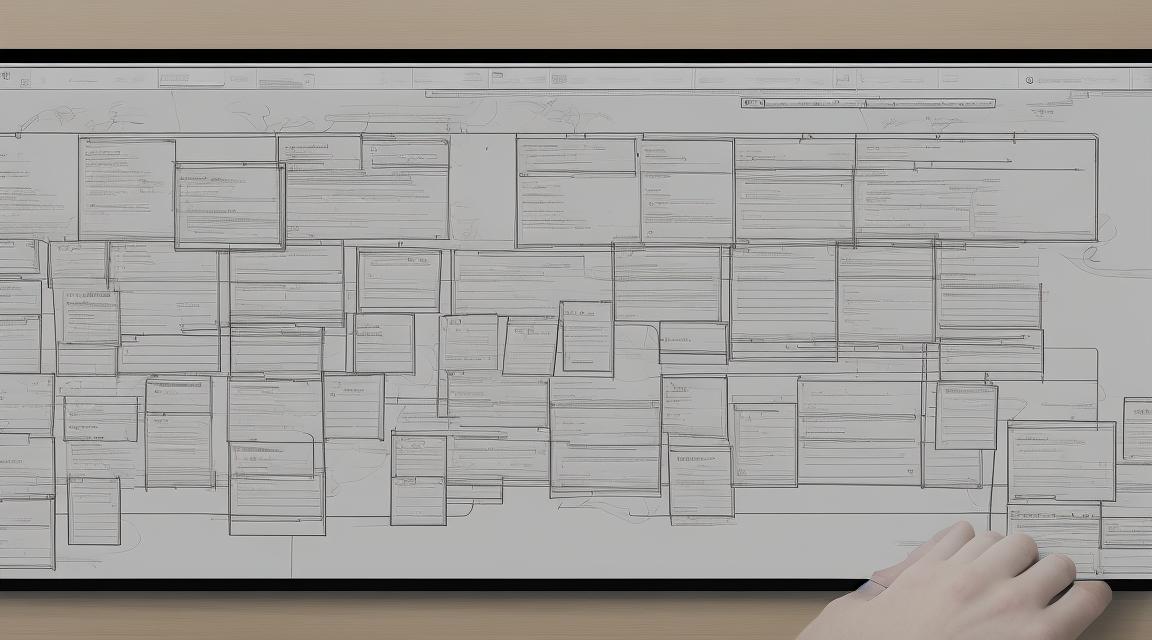In the world of user experience (UX) design, wireframing plays a crucial role in creating intuitive and user-friendly products. It serves as an essential step in the design process, helping designers to visualize and communicate their ideas effectively. This article will delve into the significance of wireframing and its best practices to ensure the creation of successful user experiences.
Defining Wireframing

Wireframing is the initial blueprint or skeletal framework of a design. It is a visual representation that outlines the basic layout and functionality of a digital product, such as a website or mobile application. Wireframes are typically created using simple shapes, lines, and placeholders, without the distraction of colors, typography, or visual elements. This minimalistic approach allows designers to focus on the overall structure and flow of the product, without getting caught up in the aesthetic details.
Benefits of Wireframing

Wireframing offers a range of benefits for UX design projects. Here are some key advantages:
- Clarity and Communication: Wireframes provide a clear visual reference for all stakeholders involved in the project, including designers, developers, and clients. They help ensure that everyone shares a common understanding of the intended design and functionality.
- Efficiency in Iteration: Wireframes enable designers to iterate and refine their designs quickly. Since wireframes are relatively quick and easy to create, designers can gather feedback and make changes early on in the design process, saving time and effort in the long run.
- Focus on User Needs: Wireframes allow designers to shift their focus from visual aesthetics to user needs and interactions. By stripping away distracting visuals, wireframes help designers concentrate on creating intuitive user experiences, ensuring that the product meets the needs and expectations of its intended users.
- Cost-Effective Design Exploration: Wireframes provide a cost-effective way to explore multiple design concepts and ideas. Designers can mock up different layouts and functionalities to test and validate different approaches before investing time and resources in high-fidelity designs.
The Process of Wireframing

Wireframing typically involves a series of steps that guide designers through the creation of an effective wireframe. Here is a general process to follow:
- Information Gathering: Before diving into wireframing, it is essential to gather all the necessary information about the project. This includes understanding the user’s goals, business requirements, and any technical constraints.
- Defining the Structure: Start by defining the basic structure of the digital product. Identify the key pages or screens that need to be designed and determine their hierarchy and relationship to each other.
- Layout and Wireframe Creation: Begin sketching out the layout of each page/screen using simple shapes and lines. Focus on organizing the content and determining the placement of key elements such as navigation menus, headers, and calls to action. Iterate and refine the wireframes as needed.
- Adding Interactions: Once the basic layout is finalized, consider the user interactions and flows within the product. Incorporate interactive elements such as buttons, forms, and links to showcase how users will navigate through the screens.
- Testing and Iteration: Share the wireframes with stakeholders and gather feedback. Use the feedback to iterate and refine the wireframes, ensuring that they align with the project goals and user needs.
- Handoff: Once the wireframes are finalized, they can be handed off to the development team as a reference for building the final product. It is crucial to create clear documentation and provide any additional explanations to ensure seamless implementation.
Best Practices for Effective Wireframing

To achieve the best results from wireframing, it is important to follow some best practices. Here are some tips to keep in mind:
- Simplicity: Keep wireframes simple and focus on the overall structure and flow rather than visual aesthetics. This helps to avoid unnecessary distraction and keeps the focus on usability.
- Consistency: Maintain consistent elements, layouts, and patterns throughout the wireframes. Consistency in design creates a sense of familiarity and enhances the overall user experience.
- Collaboration: Involve stakeholders in the wireframing process to gather diverse perspectives and ensure all requirements are understood and addressed effectively.
- User-Centric Approach: Always keep the end-users in mind while wireframing. Design with their needs, goals, and behaviors in consideration to create a user-centered experience.
- Useful Annotations: Include clear and concise annotations in your wireframes to provide additional context and explanations to stakeholders and developers.
- Testing and Validation: Validate the wireframes through user testing or feedback sessions to identify any potential usability issues or improvements early on in the design process.
Conclusion
Wireframing is an indispensable part of the UX design process, providing a solid foundation for creating successful user experiences. By visualizing the structure and functionality of a digital product, wireframes help designers communicate their ideas, iterate effectively, and bring clarity to the design process. By following the best practices mentioned above, designers can ensure the creation of user-centric and intuitive designs that fulfill the needs and expectations of their target audience.

Leave a Reply